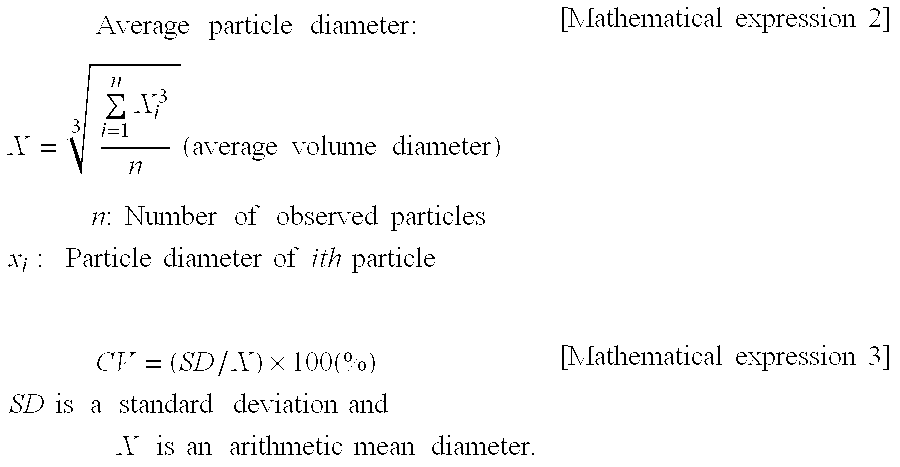Dental restorative material
a technology of restorative materials and dental implants, applied in the field can solve the problems of insufficient color conformability, insufficient diffusion degree of dental restorative materials, and insufficient mechanical strength of the cured body, and achieve the effects of superior mechanical strength, superior surface smoothness and gloss, and large diffusion degr
- Summary
- Abstract
- Description
- Claims
- Application Information
AI Technical Summary
Benefits of technology
Problems solved by technology
Method used
Image
Examples
example 1
[0183]There were mixed 10 g of A-1 (polymerizable monomer), 15 g of B-1 (organic-inorganic composite filler), and 25 g of C-1 (inorganic filler), to obtain a curable paste. The curable paste was colored into a color equivalent to artificial tooth “SURPASS ANTERIOR TOOTH A2 SHADE” (manufactured by GC Corporation), using the following pigments:[0184]white pigment: titanium oxide (average particle diameter: 0.25 μm)[0185]yellow pigment: Pigment Yellow 95[0186]red pigment: Pigment Red 166[0187]blue pigment: Pigment Blue 60 to obtain a dental restorative material.
[0188]This dental restorative material had a contrast ratio of 0.60 as measured by the following method. Also, the cured body of 0.5 mm in thickness used in the measurement of this contrast ratio showed, in a white background, L* of 71.0, a* of −0.5 and b* of 19.0. The contrast ratio is a property indicating the opaqueness of cured body.
(Measurement of Contrast Ratio)
[0189]A dental restorative material was filled in a Teflon (re...
examples 2 to 20
, COMPARATIVE EXAMPLES 1 TO 7
[0192]Dental restorative materials having the compositions shown in Table 1 and Table 2 were prepared in the same manner as in Example 1. Each of these dental restorative materials had been colored in a color corresponding to the artificial tooth “SURPASS ANTERIOR TOOTH A2 SHADE”.
[0193]These dental restorative materials were examined for properties. The results are shown in Table 3 and Table 4.
TABLE 1(A) Polymerizable(B) Organic-inorganic compositemonomerfillerRefractiveAverageindex ofRefractiveparticlepolymerUseindexdiameterUseComponentnAamountComponentnB(μm)amountEx. 1A-11.55520B-11.51611.530Ex. 2A-11.55520B-11.51611.530Ex. 3A-11.55520B-21.52812.230Ex. 4A-11.55520B-21.52812.230Ex. 5A-11.55520B-11.51611.530Ex. 6A-21.54320B-11.51611.530Ex. 7A-31.52820B-11.51611.530Ex. 8A-11.55520B-31.5166.330Ex. 9A-11.55520B-41.5169.130Ex. 10A-11.55520B-51.51618.730Ex. 11A-11.55520B-61.51632.130Ex. 12A-11.55520B-11.51611.530Ex. 13A-11.55520B-11.51611.530Ex. 14A-11.55520B...
PUM
 Login to View More
Login to View More Abstract
Description
Claims
Application Information
 Login to View More
Login to View More - R&D
- Intellectual Property
- Life Sciences
- Materials
- Tech Scout
- Unparalleled Data Quality
- Higher Quality Content
- 60% Fewer Hallucinations
Browse by: Latest US Patents, China's latest patents, Technical Efficacy Thesaurus, Application Domain, Technology Topic, Popular Technical Reports.
© 2025 PatSnap. All rights reserved.Legal|Privacy policy|Modern Slavery Act Transparency Statement|Sitemap|About US| Contact US: help@patsnap.com


